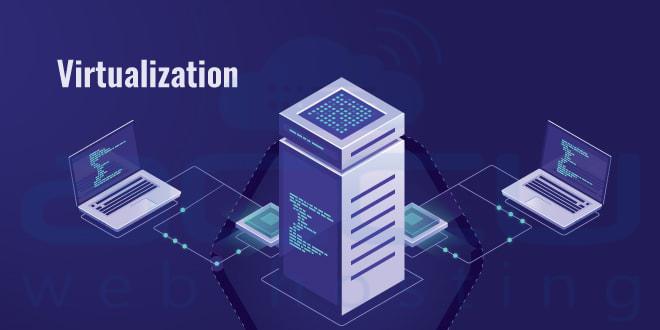In every industry, you cannot deny that information technology has been an integral part of maintaining the structure of the company. Since it has a lot of favorable benefits that both the company and employees are getting, more businesses are leaning towards fully utilizing information technology virtualization for good. By transitioning from physical to virtual, the company’s productivity and overall performance will be enhanced significantly.
When it comes to company resources, there are devices that can be virtualized to help reduce costs and improve accessibility for employees. Some of these include storage devices and hard drives that contain valuable information. Virtualization makes it possible to pool and manage resources used by many users or programs. That is why virtual machines are becoming an option that a lot of business owners are choosing. By separating systems and programs, virtualization has also bolstered safety for the company’s benefit.
As a business owner, one of the primary goals that you may have is to improve the productivity of your employees since it will reflect on the overall success of the company. Transitioning to a virtual working environment is a big step that has advantages and disadvantages, depending on how you think of it. However, by deciding to transition, you will also allow your company to be open to more innovative ways for the business to adopt and benefit from.
By reading this article, you will better understand information technology virtualization and how your company can benefit from it.
What is Information Technology Virtualization?
Virtualization in the IT world is the process of simulating an entire computer network in code. It has become a crucial aspect of today’s corporate environment, especially for large corporations that need to run numerous programs simultaneously. The end effect is lower prices, tighter security, and greater productivity.
IT virtualization’s main perk is that it lets you use various operating systems and programs at once on a single computer. This allows numerous distinct applications or services to coexist on a single physical server. Hardware and software are included in this category. The goal is to enable numerous users or apps to share these resources.
Because many physical machines can be merged into a single or multiple virtual machines (VMs), virtualized settings often contain fewer physical machines than their non-virtualized counterparts. Since only one operating system is installed on each workstation, hardware costs are cut, and productivity is boosted.
Advantages of Information Technology Virtualization
In common terms, there are a lot of virtualization types that you can choose from depending on the needs of your company. If your company chooses to virtualize, you will be able to utilize one single host computer for all the operating systems that your company software is using. You may benefit from this since it is more flexible and cost-effective in the long run. If you are not aware of it, many businesses are utilizing it because it is safer to do it this way.
Here are some more advantages of information technology virtualization.
Reduced Costs
Virtualization allows you to use fewer physical resources than traditional server setups do. As a result, you can save money on servers and the fees normally associated with their upkeep. If your company has five servers but only uses three at peak times, virtualization would allow you to turn off two of the unused servers at no extra expense or effort and turn them back on when they are needed. This will significantly lower your costs, which is a plus for the company since it means more revenue.
Reliability
When you transition to information technology virtualization, you can benefit from its reliability. Since multiple servers can coexist on a single physical server, if one server goes down, it won’t affect the others. It’s possible that multiple apps can operate on the same machine, which would ease the strain on the IT department and allow companies to avoid spending money on unnecessary purchases.
Less Physical Hardware
Since less physical hardware is required to serve the same amount of workload in a virtualized environment, businesses can save money. This is because fewer licenses are required when several physical servers are consolidated onto a single host system, as is possible with virtualization. There is also less time spent on administration and repairs since fewer physical machines are engaged. Additionally, you don’t need to worry about taking up too much physical space in your area since one host is enough for everything to function well.
Lesser Risks
The concept of virtualization relies on the separation of software from the underlying hardware. Storage, processing power, and transmission speed are all allocated independently to each program. The isolation of these resources ensures that they won’t be impacted by the actions of other programs. By isolating each system, we can stop viruses from propagating to other computers and alleviate the burden of malware removal and network maintenance on IT departments.
Improve Application Performance
IT virtualization’s ability to boost application performance and availability is yet another perk. There is less overhead when apps do not have to transit via an OS and an application layer before reaching their destination when employing software that runs directly on top of an OS. Additionally, there will be less downtime when upgrading or fixing one application because all applications run on the same host server rather than having separate servers for each.
What Is the Importance of Information Technology Virtualization?
With the use of virtualization, many servers can independently run separate operating systems without interfering with one another. Consequently, you may host more apps on the same number of servers. It also allows several users to log in separately to the same server, a feature known as multi-tenancy structures. Due to this, businesses may offer more services than they could with a single server.
Thanks to virtualization, a single machine can function as multiple operating systems. The advantages of having several computers on a single system are therefore realized. For a number of reasons, including improved safety, lower costs, and more efficient use of resources, virtualization has become increasingly popular over the past few years.
Conclusion
Information technology virtualization makes it easier for data to be transmitted from one machine to another. It is typically employed when moving data between a server and a client device. That’s why its use is so advantageous for many businesses: it boosts productivity and adaptability, which in turn boosts efficiency and performance. Keeping these programs running smoothly also requires less effort and care.



















Add Comment